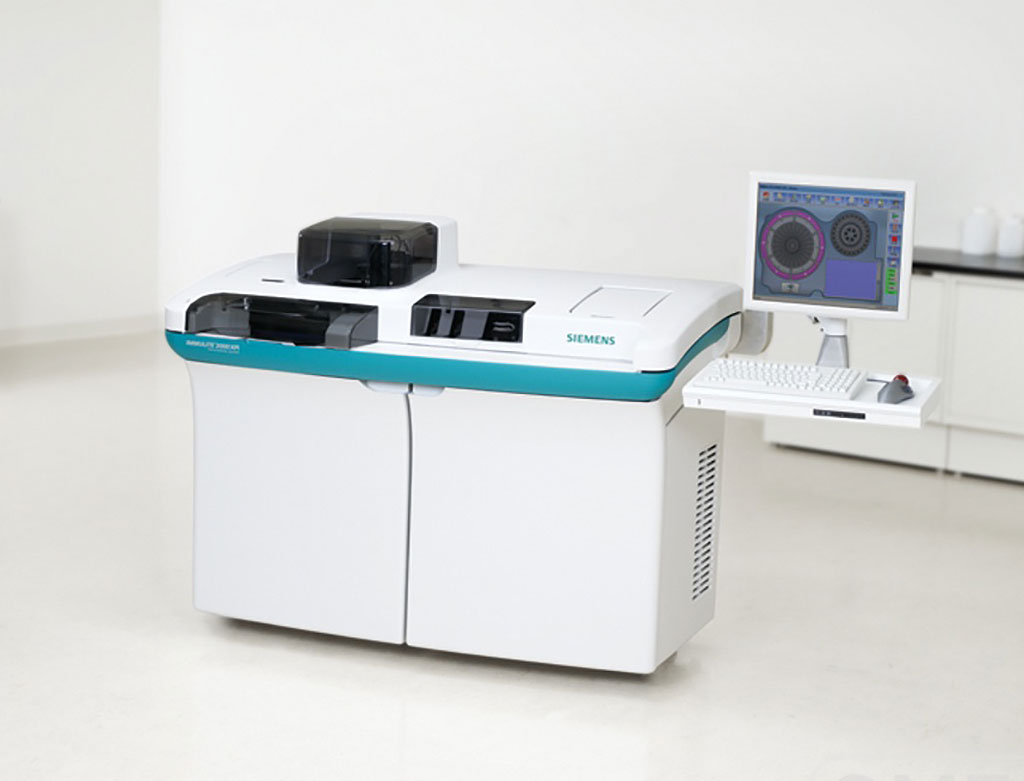Association Between Helicobacter pylori With Nonalcoholic Fatty Liver Disease Assessed
By LabMedica International staff writers
Posted on 06 Jan 2022
Non-alcoholic fatty liver disease is closely linked to various metabolic disorders such as obesity, type 2 diabetes, and cardiovascular disease, and has been considered as a hepatic manifestation of metabolic syndrome.Posted on 06 Jan 2022
Helicobacter pylori (Hp) is a Gram-negative microorganism that infects more than half of the global population. While Hp is considered to play a causative role in many gastrointestinal diseases such as chronic gastritis, peptic ulcers and gastric cancer, its role in extra-gastric diseases including metabolic syndrome, hematologic and cardiovascular diseases has also been studied.

Image: The Immulite 2000 XPI System is an easy to use, continuous random-access immunoassay analyzer with one of the largest automated immunoassay menus available (Photo courtesy of Siemens Healthcare)
Gastroenterologists at the Seoul National University Hospital (Seoul, Korea) conducted a retrospective cohort study of apparently healthy individuals who underwent liver Fibroscan during health screening tests between January 2018 and December 2018 and 1,784 subjects were included in the final analysis. Laboratory tests included serum total cholesterol, triglycerides, high-density lipoprotein (HDL) cholesterol, fasting glucose, and glycated hemoglobin (HbA1c).
Diagnosis of Hp infection was based on the results of a serum anti-Hp IgG antibody test using a commercially available chemiluminescent microparticle immunoassay kit, the Immulite 2000 CMIA (Siemens Healthcare GmbH, Erlangen, Germany). This is a solid-phase, two step chemiluminescent enzyme immunoassay. The Hp IgG in diluted serum sample bound with antigen-coated bead enclosed within a test unit. After removing unbound serum by centrifugation, an alkaline phosphatase-labeled anti-human IgG is introduced. Values higher than 1.10 IU/mL were considered positive. The Hp IgG kit has a sensitivity of 91% and a specificity of 100%.
The scientists reported that among the 1,784 subjects (mean age 55.3 years, 83.1% male), 708 (39.7%) subjects showed positive results of Hp serology. In the multivariate analysis, obesity (body mass index ≥25) (odds ratio [OR] 3.44, triglyceride (OR 2.31), and the highest tertile of liver stiffness measurement (OR 2.08) were found to be associated with NAFLD, defined by controlled attenuation parameter (CAP) ≥248 dB/m, while Hp-seropositivity showed no association with NAFLD. Serum levels of HDL cholesterol significantly decreased in subjects with Hp-seropositivity compared to HP-seronegativity in both groups with and without NAFLD.
The authors concluded that while Hp seropositivity was not associated with CAP-defined NAFLD, serum HDL cholesterol level were negatively associated with Hp-seropositivity in both groups with and without NAFLD. As various Hp antigens are associated differently with metabolic conditions, it would be better to verify multiple Hp antigen using multiplex serology. The study was published on December 13, 2021 in the journal PLOS ONE.
Related Links:
Seoul National University Hospital
Siemens Healthcare GmbH













